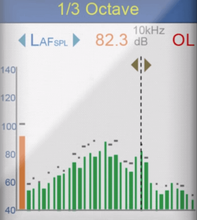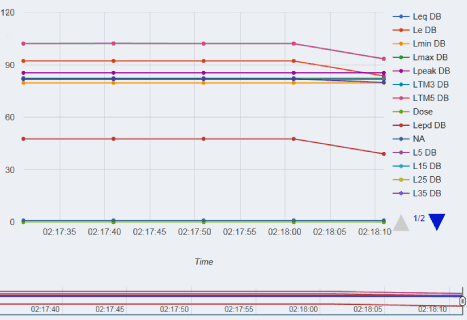Workplace Noise Assessment
Any Hearing Conservation Programme starts with a risk assessment.
In order to understand the risks associated with your particular workplace, employees and machinery, it is first necessary to get a handle on the problem.
This first step involves obtaining very accurate data relating to the levels and frequency composition of the noise that employees are or could be exposed to by conducting a Noise Measurement Survey.
In order to understand the risks associated with your particular workplace, employees and machinery, it is first necessary to get a handle on the problem.
This first step involves obtaining very accurate data relating to the levels and frequency composition of the noise that employees are or could be exposed to by conducting a Noise Measurement Survey.
Call us today on 0333 0065 002 to discuss what Noise Assessment is suitable for your workplace
Do I need a Noise Survey?
Everyone working in areas or situations where they are exposed to noise could suffer temporary or permanent Noise Induced Hearing Loss (NIHL). The control of noise at work regulations require employers to eliminate or reduce noise levels wherever possible. If this is not practically possible, and the noise levels remain above legal guidelines, the use of suitable Personal Protective Equipment (PPE) can be considered as a last resort.
The Control of Noise at Work Regulations places a requirement on all employers to manage and reduce the risk that their employees are exposed to a level of noise which may damage their health whilst working. The regulations were first established by the Health and Safety at Work Act and implemented as EU Directive 2003/10/EC - Noise. This legislation replaced the previous 'Noise at Work Regulations 1989' which had defined noise in the workplace up to that point.
These regulations came into force for the majority of most UK industries in April 2006 and should now be followed by all employers.
The Control of Noise at Work Regulations places a requirement on all employers to manage and reduce the risk that their employees are exposed to a level of noise which may damage their health whilst working. The regulations were first established by the Health and Safety at Work Act and implemented as EU Directive 2003/10/EC - Noise. This legislation replaced the previous 'Noise at Work Regulations 1989' which had defined noise in the workplace up to that point.
These regulations came into force for the majority of most UK industries in April 2006 and should now be followed by all employers.
How to conduct a Noise Survey?
|
A noise survey consists of our highly experienced technician attending your location to take a range of measurements with a noise meter.
At Safer Hearing we utilise the latest technology in the measuring process and only use Class 1 equipment in our surveys. Class 1 equipment provides much improved accuracy (over older/cheaper Class 2 devices) and includes full octave band analysis that measures elements such as LSPL, LEQ, LMIN, LMAX, Peak, LEP'd, dose and exposure points. This recorded captured data is then stored, analysed and distilled to produce a comprehensive noise measurement report which can be used to address any noise related risks. This report, and the recommendations it leads to, will be a key component of your workplace risk assessments. Our Workplace Noise Assessment Reports |
We offer the following services as part of our Noise Measurement portfolio:
- Full Site Noise Survey - Comprehensive noise assessment survey in compliance with Health and Safety Executive guidelines.
- Full Site Noise Assessment for Hearing Protection – for sites with known noise issues to ascertain suitability of existing Hearing Protection Equipment (HPE).
- Noise Mapping - Provide a visual report on the boundaries between different levels of noise in a given area.
- Octave Band Analysis of Hearing Protection - Analysis of existing HPE and recommendation of potentially better suited HPE.
- Noise Control Effectiveness - Data obtained before and after noise control measures are implemented to assess their effectiveness.
- Personal Dosimetry Service (PDS) - Our Personal Dosimetry service will measure noise over longer periods of time such as periods of eight hours which equate to a standard shift. Our dosemeters can be tailored to the individual requirements of your employees and working environment.
- Environmental Noise Measurement - Most of our noise measurement work revolves around Industrial noise measurement, however we can also offer environmental noise monitoring as required.



